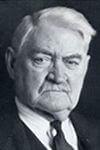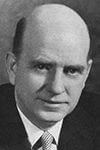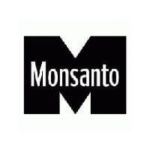History of Monsanto: What’s past is prologue
Monsanto originated in St. Louis in 1901, with John F. Queeny producing an artificial sweetener, saccharin. From 1903 to 1905, Monsanto's entire saccharin output was shipped to Atlanta (saccharin was one of the secret ingredients in original Coca-Cola).
Named after Queeny's wife, Olga Mendez Monsanto, the company eventually expanded to other products such as caffeine and aspirin, as well as synthetic rubbers and fibers.
Sports fans are familiar with the most popular synthetic fiber use — AstroTurf, patented by Monsanto in 1965 and originally sold under the name “ChemGrass.” It was re-branded after it was installed as the playing field at the Houston Astrodome in 1966.

Now, Monsanto is one of the “Big 6” biotech corporations — along with BASF, Bayer, Dow Chemical, Dupont, and Syngenta. They dominate the world's seed, pesticide, and biotechnology industries.
Monsanto is the mother of agricultural biotechnology. The company produces biotechnology, genomics, and herbicides for corn, cotton, oil seeds, and vegetables. It also produces genetically-altered seeds to tolerate it's most notable product, Roundup. Other products manufactured under the Monsanto umbrella have included:
- Agent Orange — The U.S. military sprayed millions of gallons of Agent Orange — a mixture of two herbicides (2,4-D and 2,4,5-T) — and other herbicides on trees and vegetation during the Vietnam War. From 1965 to 1969, Monsanto Company was one of nine wartime government contractors that manufactured Agent Orange. Decades later, concerns about the health effects from these chemicals continue.
- Polychlorinated biphenyls — PCBs are manufactured organic chemicals that contain 209 individual chlorinated chemicals (known as congeners). There are no known natural sources of PCBs. Some commercial PCB mixtures are known by their industrial trade name, Aroclor. The manufacturing of PCBs stopped in the U.S. in 1977 because of evidence that they build up in the environment and cause harmful health effects
- Dichloro Diphenyl Trichloroethane — DDT was developed in the 1940s as the first of the modern synthetic insecticides. It was initially used to combat malaria, typhus, and the other insect-borne human diseases. It also was effective for insect control in crop and livestock production, institutions, homes, and gardens.
- Recombinant Bovine Growth Hormone — In order to increase milk production, Monsanto developed genetically engineered rBGH. The FDA approved the synthetic hormone use in 1993, and today about a third of U.S. dairy cows are injected with rBGH, which boosts milk production by about 10 percent. The World Health Organization, the FDA and numerous medical associations believe milk from rBGH-treated cows is safe — but many nations have banned rBGH, including all 25 European Union nations, Japan, Australia, New Zealand, and Canada.
- Aspartame — FDA approved aspartame in 1981 for uses, under certain conditions, as a tabletop sweetener, in chewing gum, cold breakfast cereals, and dry bases for certain foods. In 1983, the FDA approved the use of aspartame in carbonated beverages and carbonated beverage syrup bases, and in 1996, it was OK'd for use as a “general purpose sweetener.” A study in the American Journal of Industrial Medicine, which treated six groups of mice with aspartame from before their birth until their deaths, found that this toxic artificial sweetener induces cancers of the liver and lungs in male mice.

In 1926, Dr. Charles Thomas and an associate, Dr. Carroll A. Hochwalt, formed an independent laboratory in Dayton, Ohio. The laboratory did wide-ranging research, from developing a synthetic rubber to devising smoked salt for the curing of hams and bacon, and attracted attention for its creativity.
One of those who took notice was Queeny's son Edgar, the president Monsanto with a reputation for snatching up companies (and their talent). Monsanto bought Thomas and Hochwalt Laboratories, and not long after Dr. Thomas was drawn into wartime research. By 1940 he had developed a synthetic resin that was supplied to the British to sabotage their gasoline supplies if the Germans mounted a successful invasion.
In 1943, the Manhattan Engineer District tasked Dr. Thomas (and Monsanto) with separating and purifying the radioactive element Polonium, which was to be used as the initiator for the atomic bombs. (Yes, Monsanto was a key player in the Manhattan Project, which ushered in the nuclear age.)
Dr. Thomas was named to Monsanto's board of directors in 1942 and became a vice president the next year. By 1947 he was executive vice president. Dr. Thomas became president in 1950 and was named the chairman of the board in '60. He retired in 1970. It was this 30-year stretch of growth for Monsanto that laid the groundwork for today's leading biotech behemoth.
During the time Thomas and Hochwalt Laboratories began making a name for itself, a farmer in Arkansas was actively promoting soybeans to growers. Jacob Hartz and Alfred Ralph Thorell formed Hartz-Thorell Supply Co., a McCormick-Deering dealership, in 1925.
Hartz founded Jacob Hartz Seed Co. as a division of Hartz-Thorell Supply Co. In 1927, Hartz-Thorell owned the first seed cleaner in Arkansas, and in 1936, the company built its first seed processing plant. The Hartz-Thorell partnership dissolved in 1942, and Hartz became president of Jacob Hartz Seed Co. Forty years later, it would be a key acquisition for a burgeoning biotech company.
Monsanto launched its Agricultural Division in 1960. Ramrod, a herbicide that inhibits cell division, was released in 1964, followed by Lasso in '68, and Roundup in 1976.
Did You Know
A $22 million award to an internal whistle-blower at Monsanto is a good example of the impact an internal whistle-blower can have in showing the Securities and Exchange Commission where there may be problems inside a company.
Monsanto in February settled charges of violating accounting rules related to the recording of the costs of a rebate program for Roundup, one of its leading consumer products. The company offered rebates to its distributors to increase sales but shifted those costs into the next fiscal year. By not recognizing the expenses right away, it was able to push up its revenue while delaying the reduction caused by recognizing the costs, something that investors would certainly want to know in evaluating how a company is doing.
Accounting shenanigans are notoriously difficult to uncover, especially for a company like Monsanto, which has annual sales of more than $10 billion and multiple product lines. The amount of the rebates was comparatively small, less than $100 million over two years, so it is unlikely it would have been noticed by the SEC without a whistle-blower saying where to look.
‘Probably carcinogenic to humans'
While Monsanto was promoting it game-changing biochemical products, it was hiding a life-changing secret.
From The Sun Sentinel on Jan. 6, 2002:
In 1966, Monsanto managers discovered that fish submerged in that creek turned belly-up within 10 seconds, spurting blood and shedding skin as if dunked into boiling water. They told no one. In 1969, they found fish in another creek with 7,500 times the legal PCB levels. They decided “there is little object in going to expensive extremes in limiting discharges.” In 1975, a company study found that PCBs caused tumors in rats. They ordered its conclusion changed from “slightly tumorigenic” to “does not appear to be carcinogenic.”
Monsanto enjoyed a lucrative four-decade monopoly on PCB production in the United States, and battled to protect that monopoly long after PCBs were confirmed as a global pollutant. “We can't afford to lose one dollar of business,” one internal memo concluded.
In the trial of Owens v. Monsanto on April 4, 2001, the company's lawyers acknowledged only one health threat posed by exposure to PCBs: chloracne, a serious skin condition. However, a 1996 study by the U.S. Environmental Protection Agency found that “occupational studies show some increases in cancer mortality in workers exposed to PCBs” and “significant excess mortality from cancer of the liver, gall bladder, and biliary tract in capacitor manufacturing workers exposed to Aroclors 1254, 1242, and 1016.”
The study noted, “Based on these findings, some commercial PCB mixtures have been characterized as probably carcinogenic to humans.”
In 2003, more than 20,000 plaintiffs in federal and state trials reached a $700 million settlement to resolve all outstanding Anniston, Ala., PCB litigation. The agreement included $600 million in cash payments. Costs for cleanup, prescription drug, and other programs put the total past $700 million. Monsanto agreed to pay $390 million, while Solutia was to pay $50 million over 10 years in equal annual installments. The remaining $160 million would be provided through Monsanto's, Solutia's and Pharmacia Corporation's commercial insurance.
The jury found that “Monsanto had engaged in outrageous behavior, and held the corporations and its corporate successors liable on all six counts it considered — including negligence, nuisance, wantonness and suppression of the truth.”
Solutia, which was formed as a divestiture of Monsanto, filed for bankruptcy on Dec. 17, 2003, citing litigation, unsustainable debt structure, and a downturn in the economy. Solutia emerged from bankruptcy on February 2008 and was bought by Eastman Chemical Company in 2012 for $4.8 billion.
Today, Monsanto makes note that it is focused on agriculture, distancing itself from its sordid past in the chemical business. However, it remains indemnified with Pharmacia and Solutia.
‘A product of human ingenuity'
Diamond v. Chakrabarty was a U.S. Supreme Court case in 1980 that dealt with whether genetically modified organisms can be patented. It was genetic engineer Ananda Chakrabarty's “product of human ingenuity” that ultimately set in motion a collision course between GMOs and Monsanto.
Chakrabarty, while working for General Electric, filed a patent for a genetically modified bacterium capable of breaking down multiple components of crude oil. However, the application was rejected; under patent law at that time, living things were generally understood to not be patentable under Section 101 of Title 35 U.S.C.
In a 5-4 decision, the Supreme Court ruled in favor of Chakrabarty, holding that “A live, human-made micro-organism is patentable subject matter under 35 U.S.C. § 101. Respondent's micro-organism constitutes a ‘manufacture' or ‘composition of matter' within that statute.” Chief Justice Warren Burger judged that Chakrabarty's “micro-organism plainly qualifies as patentable subject matter. His claim is … to a non-naturally occurring manufacture or composition of matter — a product of human ingenuity.”

“Monsanto should not have to vouchsafe the safety of biotech food. Our interest is in selling as much of it as possible. Assuring its safety is the FDA’s job.”
Phil Angell
Former dir. of corporate communications
In 1982, the Jacob Hartz Seed Co. was acquired by Monsanto, and its scientists became the first to genetically modify a plant cell. Five years later, Monsanto conducted the first U.S. field trials of plants with biotechnology traits.
Monsanto bought the plant biotechnology assets of Agracetus in 1996 and purchased biotech research company Calgene a year later. Calgene had put the first consumer GMO fruit on grocery shelves in 1994 — the Flavr Savr, a delayed-ripening tomato that had a longer shelf life than conventional tomatoes.
Continuing to push its biotech agribusiness, Monsanto also introduced Roundup Ready Soybeans in 1996, a bioengineered seed that provided farmers with in-seed herbicide tolerance to Roundup and other glyphosate-based herbicides. Roundup Ready Canola and Roundup Ready Cotton hit the market the next year.
While GMOs were becoming part of the agricultural vernacular in the late 1990s, Phil Angell, Monsanto's director of corporate communications in 1998, famously declared: ”Monsanto should not have to vouchsafe the safety of biotech food. Our interest is in selling as much of it as possible. Assuring its safety is the FDA's job.”
About Monsanto and the FDA …
Jeffrey Smith, the author of Seeds of Deception and Genetic Roulette, has documented the health risks of GMOs. His Institute for Responsible Technology launched a campaign for healthier eating, designed to achieve the tipping point of consumer rejection of GMOs to force them out of the food supply.
The IRT went nose to nose with Monsanto over Recombinant Bovine Growth Hormone (rBGH), and produced the documentary Your Milk on Drugs — Just Say No! Among the information uncovered:
- An FDA scientist who demanded more safety studies on rbGH, but was fired for holding up its approval.
- A FOX TV investigative reporter whose news series linking rbGH to cancer was canceled after the station received letters from Monsanto's attorney threatening “dire consequences for Fox News.”
- Canadian government scientists who wrote a scathing critique of the FDA's flawed and biased evaluation of rbGH, and then testified about political pressure, stolen evidence, and an alleged bribe offer from Monsanto.
- Rigged research from the drug's maker, meticulously designed to cover up health problems.
- A scientist who did rbGH research for Monsanto, and then became the drug's lead reviewer at the FDA.
- Michael Taylor, Monsanto's former attorney, was in charge of FDA policy when rbGH was approved. He later was a Monsanto vice president (1996-2000) before returning to the FDA. In 2010 he was appointed the deputy commissioner for foods.
- Also: The World According to Monsanto
Monsanto created rBGH to stimulate milk production in cows. The use of rBGH stimulates the production of insulin-like growth factor 1 (IGF-1), a naturally occurring hormone in both cows and humans that regulates cell growth, division, and differentiation. Cow's milk that is treated with rBGH has higher levels of IGF-1. In addition to breast cancer, increased IGF-1 levels have been associated with prostate, colon, and other cancers.
In 2007, Dr. Samuel Epstein exposed the dangers of rBGH in What’s in your Milk? This book reveals the science, politics, and corporate greed behind the creation and approval of rBGH. Since then, many milk producers have decided to sell only rBGH-free milk. Monsanto also sold its rBGH business unit (Posilac) to Eli Lilly in 2008.
- Also: Dr. Epstein on cancer prevention with Dr. Joseph Mercola
- More: 8 Shocking Facts about Bovine Growth Hormone
- More: Monsanto Corporate Rap Sheet
The Monsanto GMO monolith
Roundup remains Monsanto's bell cow in the consumer marketplace. However, the herbicide is under increased scrutiny. A study published in Biomedical Research International shows that Roundup is 125 times more toxic than its active ingredient glyphosate studied in isolation. Roundup also was linked to cancer recently by the WHO:
There is convincing evidence that glyphosate also can cause cancer in laboratory animals. On the basis of tumors in mice, the United States Environmental Protection Agency (US EPA) originally classified glyphosate as possibly carcinogenic to humans. A US EPA report and several more recent positive results conclude that there is sufficient evidence of carcinogenicity in experimental animals. Glyphosate also caused DNA and chromosomal damage in human cells, although it gave negative results in tests using bacteria. One study in community residents reported increases in blood markers of chromosomal damage (micronuclei) after glyphosate formulations were sprayed nearby.
While diverging from a chemical company to an agribusiness / biotech model, Monsanto has gobbled up, among others: Holden's Foundation Seeds, Corn States Hybrid Service, DeKalb Genetics Corp., Channel Bio Corp., Fontanelle Hybrids, Stewart Seeds, Trelay Seeds, Stone Seeds, Specialty Hybrids, NC+ Hybrids, Stoneville, Seminis, Diener Seeds, Sieben Hybrids, Kruger Seed Company, Trisler Seed Farms, Gold Country Seed, Heritage Seeds, Campbell Seed, De Ruiter Seeds Group, Semillas Cristiani Burkard, Aly Participacoes Ltda., Beeologics, and Divergence.
In 2007, Monsanto formed International Seed Group, an investment holding company that provides specialized, regional vegetable and fruit seed companies with access to capital and technology.
According to Food and Water Watch, Monsanto held an overwhelming monopoly on the seed market in 2013:
- 95 percent of the U.S. GE corn seed market containing Monsanto’s traits.
- 93 percent of U.S. soy grown from Monsanto-patented GMO seeds.
- 89 percent of the U.S. GE cotton seed market containing Monsanto’s traits.
- 80 percent of U.S. corn grown from Monsanto-patented GMO seeds.
- 27 percent of Monsanto profits came from the sale of Roundup herbicide.
- 1,676 — number of seed, plant, and other applicable patents owned by Monsanto.
- 282 million — number of acres Monsanto products are grown worldwide (up from 3 million in 1996).
- 151.4 million — number of acres Monsanto’s GE crop traits are grown in the U.S. (40 percent of total cropland).
Monsanto cornered the markets on genetically-modified corn, cotton, soybean, and sugarcane through its biotechnologies. It also spent millions on lobbying Congress to protect its patent-seed business. … If history repeats itself, it's merely a matter of time before those “specialized, regional vegetable and fruit seed companies” become part of the Monsanto GMO monolith.
On Sept. 14, 2016, Bayer announced it has offered $66 billion to take over Monsanto. In 2018, the companies were successful in getting the merger past regulators around the globe.
Bayer's website notes “Advancing health and nutrition is what we do best and care most about at Bayer. Strengthening our position in agriculture accelerates the pursuit of our purpose: Science for a better life. Together, we’re shaping agriculture to benefit farmers, consumers and our planet.
“Bringing together biology, chemistry and digital tools, we’re accelerating innovation. Across more than 35 research sites and more than 175 breeding sites, we invest more in research and development than any other company in the industry.”
However, in January 2019, Bayer's share price had fallen by more than a third since the deal was concluded in June and languished near a seven-year low.
Whatever benefits the Monsanto deal will ultimately deliver, for now, they remain obscured by the legal troubles that Bayer inherited from the U.S. group. Barely two months after the deal was completed, a California jury ruled that two key Monsanto products — both weedkillers based on the chemical glyphosate — were linked to cancer.
